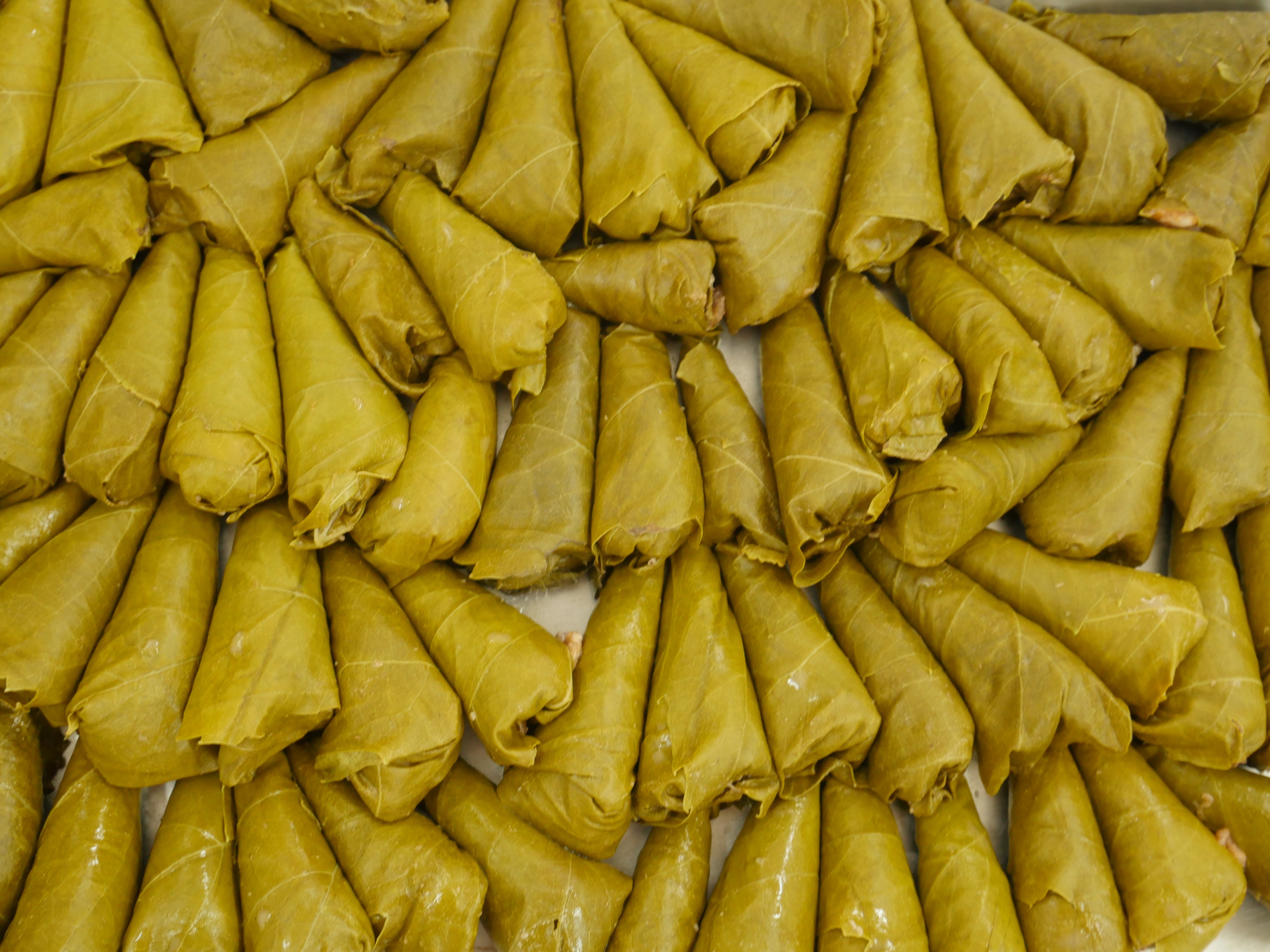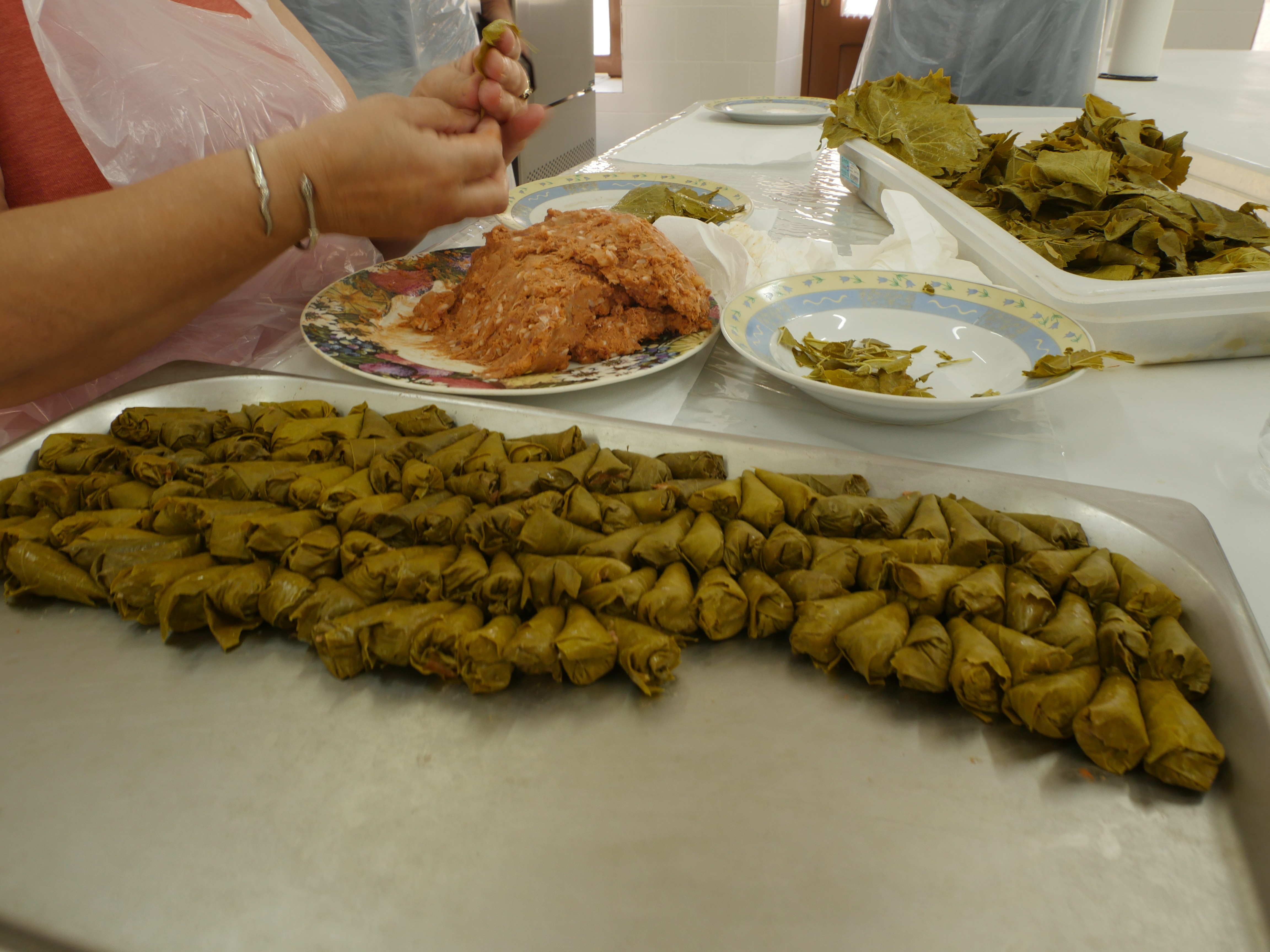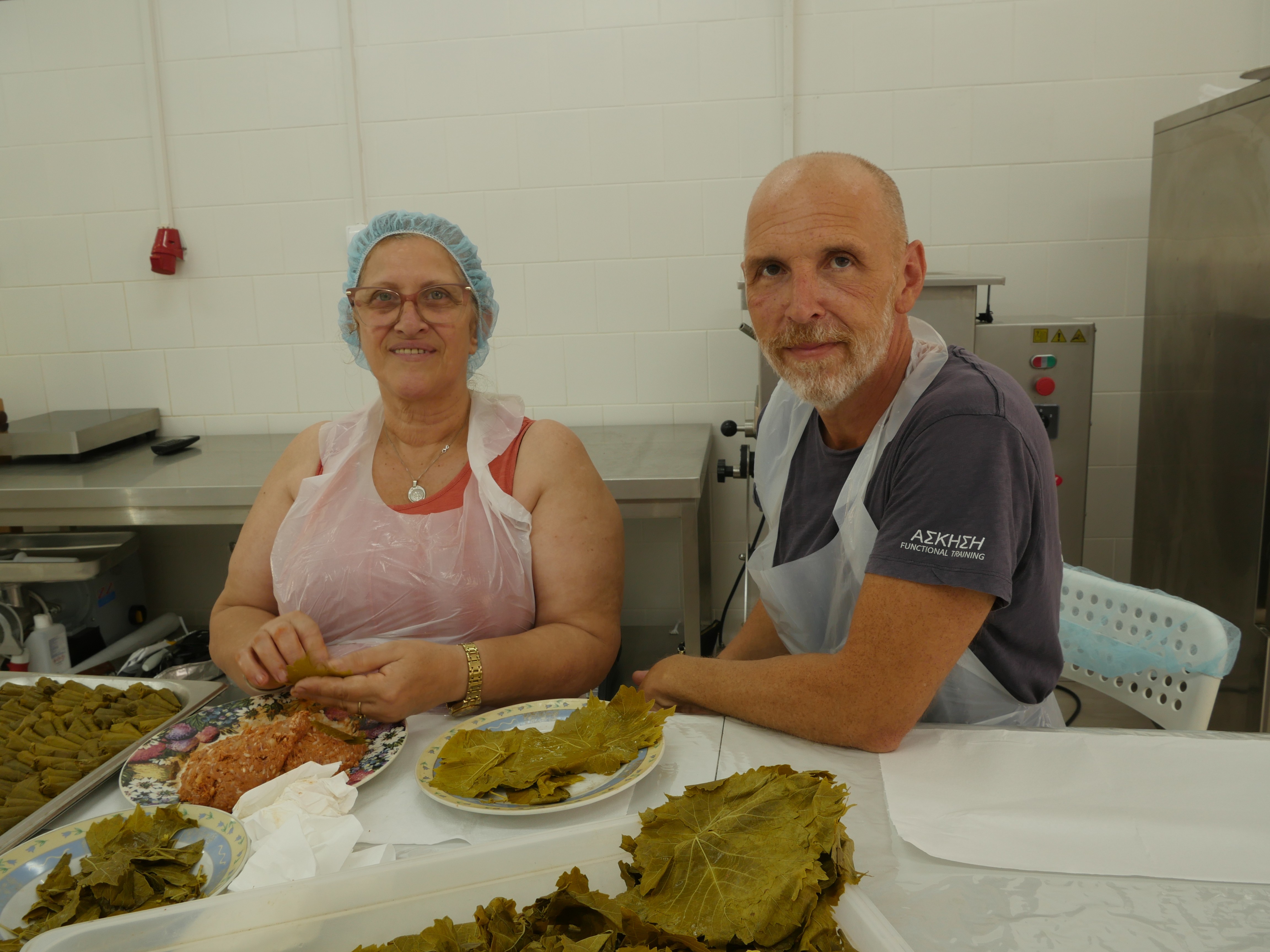The art of Dolmadakias : Stories wrapped in leaves

On the remote and windswept island of Kassos, located in the southeastern Aegean, a quiet culinary tradition is being lovingly preserved, one tiny grape leaf at a time. In a modest workshop just two years in operation, a group of skilled local women produce kasiotika dolmadakia. Kasiotika dolmadakia is a unique version of the classic Greek delicacy that is as much about memory and heritage as it is about flavor.
This isn’t mass production. It’s manual craftsmanship. Each dolmadaki, no bigger than a finger, is hand-rolled with precision and care, reflecting both a skill passed down from mother to daughter and a uniting respect for tradition. These dolmadakia differ notably from their counterparts across Greece and the wider Eastern Mediterranean. Most are filled only with rice and herbs. Here, in Kassos, the filling includes meat, rice, onions, tomato paste, salt, and pepper. This is a richer and more robust combination, giving the local version a distinctive taste and a sense of identity connected to Kasos, that islanders proudly defend.
A Tradition Rooted in Family
The process isn’t just aboutpreparing food, it’s about preserving memory. In the words of oneof the workers, dolmadakia represent a “memory taste”, a flavorthat recalls weddings, feast days, and Sunday family lunches. Forgenerations, these were dishes made at home for specialoccasions—intimate, celebratory, meaningful. Women learned to rollgrape leaves as young girls at their mother’s side, repeatingmovements that had been practiced for decades. “We’ve learned itsince we were children. It’s like second nature”, adds Pelagia,as she’s rolling a dolmadakia with perfect ease.

Today, that inherited knowledge is what drives the small cooperative workshop. “We don’t train”, explains Kostas, a member of the cooperative. The skill is so refined, so instinctual, that it cannot easily be taught. The secret of its confection is held between women of Kassos. Men note with a hint of humor that they don’t typically take part in the production. “They don’t know how to wrap it properly”, says Kostas.
At first glance, rolling dolmadakia may appear simple, even mundane.But the reality is quite different. Each kilo contains approximately 160 individual pieces, each rolled by hand. The workshop employs,seven women, who together produce around 50 kilos per day, animpressive feat considering the time and focus required. One kilotakes around 45 minutes to prepare.
Ingredients with a Story
Even the ingredients speak to the workshop’s attention to detail. The grape leaves, essential for the dolmadakia’s delicate wrapping, are gathered primarily from Crete and other parts of Greece. They must be soft, pliable and sturdy enough to hold the filling, yet tender enough to melt on the tongue after cooking.
Once prepared, the dolmadakia are frozen raw, preserving freshness and allowing consumers to cook the mat home. Because the filling includes meat, they cannot be canned or cooked ahead of time. Instead, they are boiled for just 30 minutes before serving, often with yogurt or lemon juice for an enhanced contrast…
From Kasos to the World
Though the workshop is young, its ambitions are growing. The dolmadakia are currently sold on Kasos, as well as in Crete, Karpathos, and Athens, with future plans to expand even further. There’s already international interest from France, the U.S. and beyond, as they have developed a taste for these tiny parcels of tradition.
But for the makers, the real reward lies not just in reaching new markets, but in sharing what they call the “memory taste”. They want to give others the experience they had as children: the smell of spices, the warmth of shared meals and the tradition of Kasos embedded in them.

Looking Ahead
Though still in its infancy, the cooperative holds potential, not only as a business but as a living cultural archive. It may one day need to train new hands, perhaps even men, in the delicate fold-and-tuck that has defined generations. But for now, the workshop remains a bastion of hard work and local knowledge.
In a world rushing toward automation and convenience, Kasos offers a quiet counterpoint. It acts as a reminder that some of the richest flavors come not from speed or scale, but from patience, memory, and the human touch. Dolmadakia, here, are more than food. They are stories wrapped in leaves.
Text : Léna Romieu, Alex Tsekouras, Dina Kadouri, Julia Gaul
Photos : Julia Gaul, Léna Romieu
